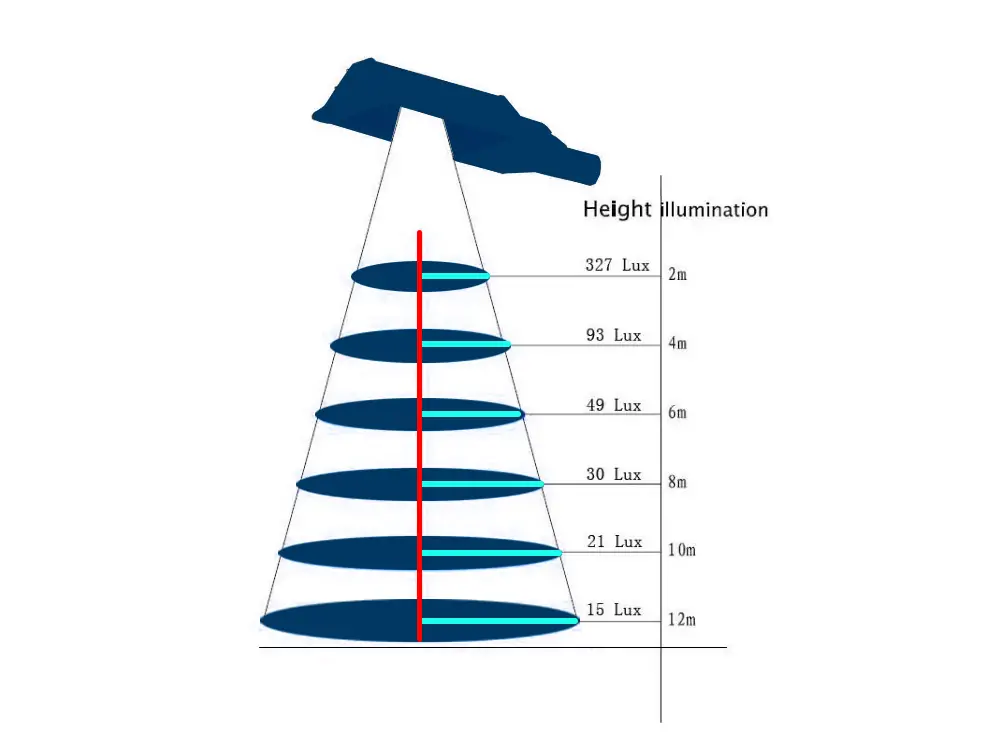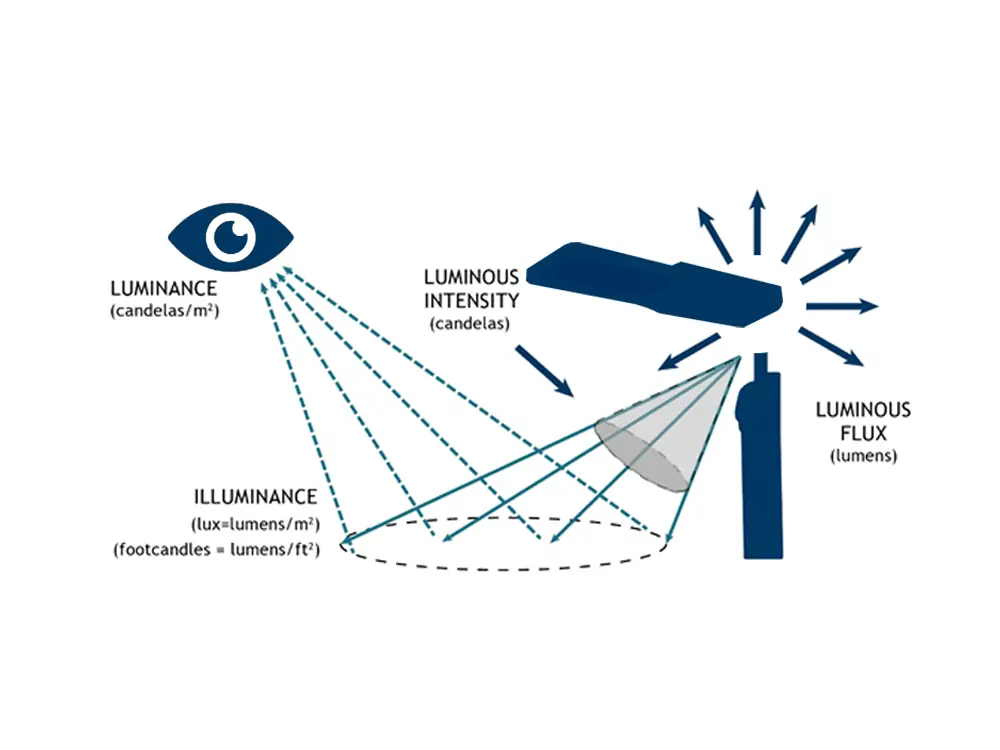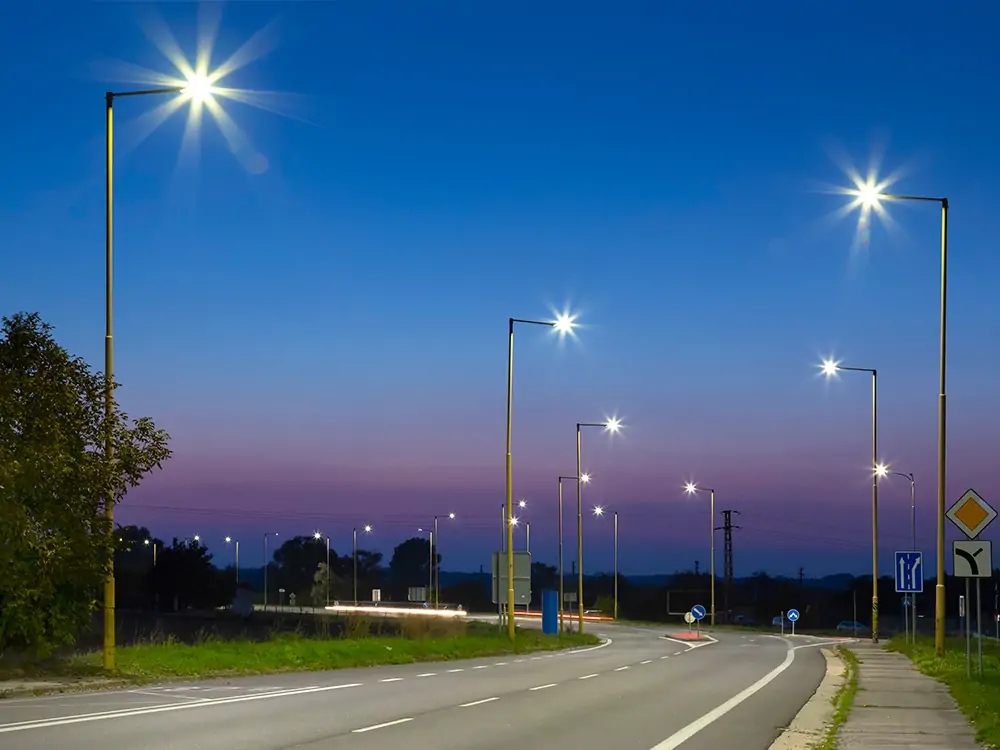We know that lighting is a very confusing subject. You need to calculate brightness, energy consumption, and other features. However, the real question is how to calculate the different factors. Watts, lumens, and lux are all measurements of light output. Worry less if you are still confused between the units—we are here to help you. How to Convert Watts to Lumens and Lumens to Lux? Here is an expert-written article.

What is Watts?
Let’s understand by learning the meaning of watts. Watts is a unit of radiant flux measurement. In the International System of Units (SI), it is a measurement of power. Invented in the 18th century, it was named after James Watt, a Scottish engineer. In simple words, it is the rate at which energy is transferred over a period of time. One watt is equivalent to one joule per second (1 W = 1 J/s). Here are the applications of watts:
- To measure the electrical energy of household appliances.
- To calculate the sound power of loudspeakers.
- To calculate the power of high-edge devices, such as solar panels.
What are Lumens?
Lumens are measures of the brightness of a light. It comes from a Latin word, lumen, which means source of light. It indicates the amount of visible light emitted from a light source. Compared to watts, lumens measure the energy in a light. In simple words, more wattage may not mean more light, but more lumens means extra brightness. Here are some common applications of lumens:
- In LED lighting.
- In projectors for better projections in exhibition halls, auditoriums, and meeting rooms.
What is Lux?
Let’s come to a third important unit of the topic, lux. It is derived from the Latin word “lux,” which means light. In general terms, lux is defined as the unit of measurement for light intensity in a specific area. In simple terms, it is the total amount visible in a particular area. It is a convenient way to determine the intensity or brightness of a light beam. For example, the intensity of direct sunlight is between 32,000 and 100,000 lux, and for moonlight, it is 1 lux. The common applications of lux include:
- To measure professional light levels and their effectiveness.
- To measure camera performance in certain light conditions.

Difference Between Lumens and Lux
People often feel that lumens and lux are similar since both measure brightness. However, the two are different. Lumens tell about the total light of a bulb or light source in all directions. In contrast, lux is defined as the amount of light that falls on a specific area. Here is a quick example to help you understand better:
A 10-watt LED bulb may produce 700 lumens. However, when the bulb is focused on a 10-square meter area, each area will get just 70 lux or something, as calculated. The former measures the total brightness of the lamp, while the latter measures brightness per unit area.
How to Convert Watts to Lumens, Lumens to Lux?
Understanding the conversation table is important for setting effective lighting in your homes. Here is a simple explanation of how to convert watts to lumens and lumens to lux.
Converting Watts to Lumens
As discussed above, watts measure power consumption, while lumens measure total brightness. To convert watts to lumens, one must know the light source’s luminous efficacy, expressed in lumens per watt (lm/W). Luminous efficacy is the key factor behind this conversation.
You can easily convert watts to lumens with this quick formula:
Lumens=Watts×Luminous Efficacy (lm/W)
Luminous efficacy depends on the type of light. You can check the bulb’s packaging or specifications for its luminous efficacy. For example, an LED bulb has a luminous efficacy between 80– 120 lm/W, and for incandescent bulbs, it is 10–15 lm/W.
Here is an example to help you understand this conversation better. For a bulb with 20-watt LED bulb with a luminous efficacy of 200 lm/W, the lumens are:
20 watts × 200 lm/W= 4000 lumens

Converting Lumens to Lux
Above, we have learned that lux is the brightness of light over a specific area. Here is the formula through which you can convert lumens to lux:
Lux=Lumens/Area (m2)
Here is a quick example to help you understand better. For example, if you want to find the lux of a light source that produces 2000 lumens over an area of 20 square meters,
Lux= 2000 lumens/20m2 =100 lux
Remember to measure or estimate the area you want to light. The smaller the area, the higher the lux value for the same amount of lumens.
That’s how you can convert different units of light into one another.
How to Improve Luminous Efficacy?
Measured in candelas (cd), luminous intensity is important in lighting design. Architects can bring out the best in commercial or residential spaces by measuring the total light emitted in a particular direction. It is essential for enhancing the perception or setting visibility of an area. Different factors determine luminous efficacy. Here’s how you can improve luminous efficacy by controlling those factors:

Correlated Color Temperature (CCT)
CCT, or Correlated Color Temperature, measures the appeal or color of a light source. It would help if you chose the right CCt to improve the light quality and efficiency. Higher CCTs mean better luminous efficacy, but that’s not true. You must consider the purpose and requirements to make an informed decision.
For example, warm white creates a cozy atmosphere suitable for homes. In contrast, cool white, ranging between 4000 K and 5000 K, is perfect for bright and neutral lighting. That’s why it is used in offices or commercial buildings.
Higher CCTs generally result in better luminous efficacy, but this must be balanced with the light’s intended use.
Índice de restituição de cor (CRI)
CRI indicates how accurately a light source displays colors compared to natural sunlight. It is scored on a scale of 0 to 100. A higher CRI (80–100) ensures better color representation, improving the lighting experience. Thus, high-CRI lights are crucial for spaces where color perception matters, like studios, retail stores, or workspaces.
LED Binning
Binning is the process of sorting LEDs based on their characteristics. It generally counts features like brightness, color temperature, and voltage. Good binning lights provide consistent brightness across multiple LEDs. Thus, invest in LEDs with better binning for higher luminous efficacy and reliability.
Dissipação de calor
Excess heat reduces LEDs’ efficiency and lifespan. Efficient heat management is crucial for maintaining luminous efficacy over time. To tackle the issue, you can either use heat sinks made from aluminum or advanced materials, which draw heat away from LEDs from time to time, or you can use LED designs that prevent overheating.
LED Driver
The LED driver regulates the power supply to LEDs. A high-quality driver ensures consistent performance and prevents flickering. For stable and energy-efficient lighting, look for efficient drivers with minimal energy loss. Go for drivers with power factor correction (PFC) to improve energy use and high luminous efficacy.
Lighting Distribution
Efficient light distribution reduces wastage by focusing light where it’s needed. This improves the overall luminous efficacy of the system. You can either direct the right to the desired area. For this purpose, choose the right angle based on the application. Go for narrow beams for spotlighting and wide beams for general lighting. Optimized distribution minimizes light spill and ensures maximum brightness where required.
LED Watts to Lumens
There is no second thought that LEDs have revolutionized lighting systems. This stable light source delivers high lumens with minimal power. Traditional incandescent bulbs were inefficient, converting most energy into heat rather than light. Their brightness was directly tied to wattage. LEDs, however, use energy more efficiently, producing more light (lumens) with less power (watts). Understanding their watt-to-lumen ratio highlights their efficiency. Here is a quick conversation table that helps you understand the LED watts-to-lumens ratio:
| Brilho (lúmens) | Incandescent Watts | LED Watts |
| 450 lumens | 40 watts | 4–5 watts |
| 800 lumens | 60 watts | 9–10 watts |
| 1100 lumens | 75 watts | 11–12 watts |
| 1500 lumens | 100 watts | 14–17 watts |
| 2250 lumens | 150 watts | 20–25 watts |
| 3000 lumens | 200 watts | 25–30 watts |
Way Forward
Are you still finding lighting a complex subject? It may not be easy to code at first. But understanding the relationship between watts, lumens, and lux simplifies everything. It also helps you choose the best lighting system for your space. To quickly recap, watts indicate energy usage, lumens measure brightness, and lux gauges light intensity over a specific area. Converting between these units ensures you make informed choices for optimal lighting.
Focus on factors like CCT, CRI, heat management, and LED quality to achieve the best luminous efficacy. With their excellent watt-to-lumen ratio, LEDs remain the gold standard for efficient lighting. By understanding these concepts, you’ll create well-lit spaces that save energy while enhancing comfort and functionality. Lastly, always choose the best LED manufacturer in your region for the best results.
